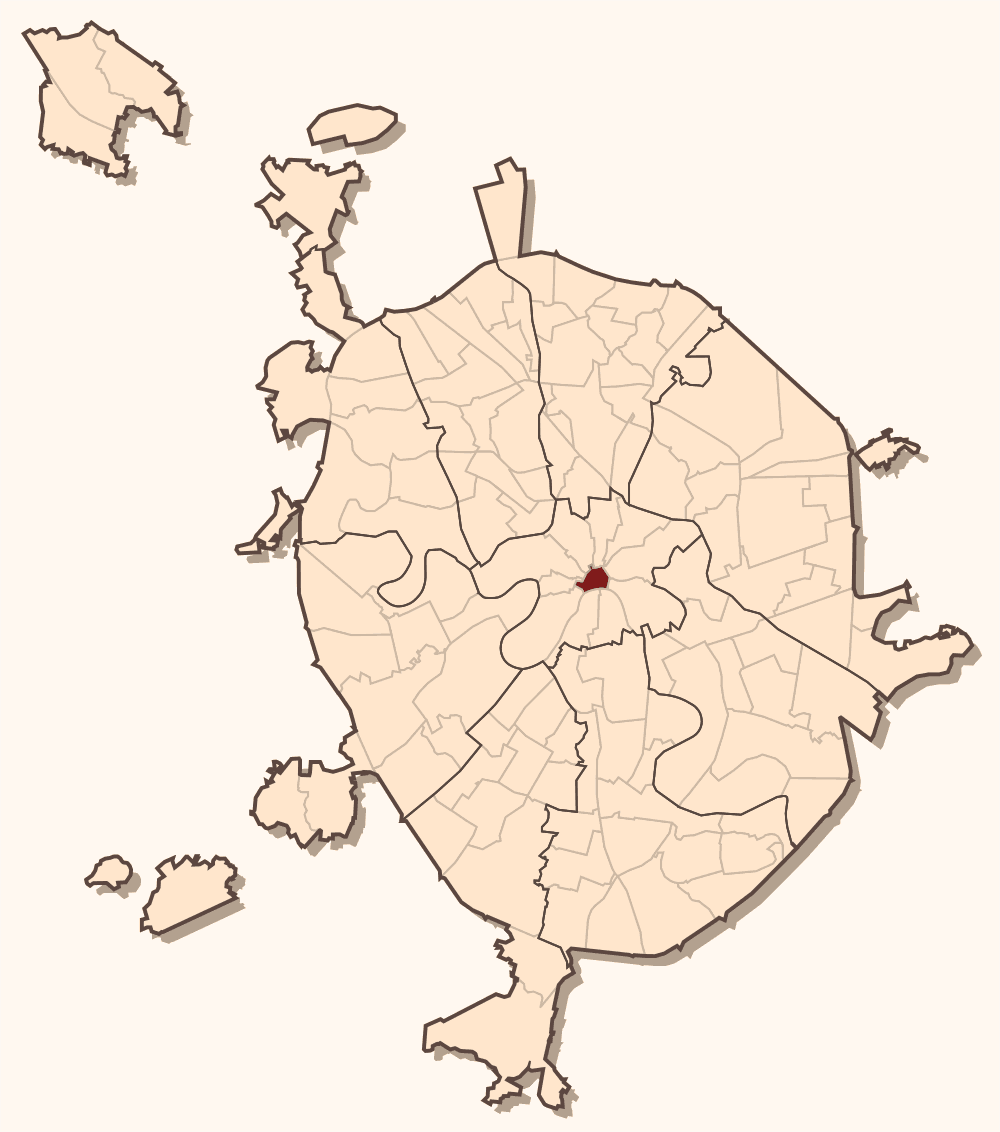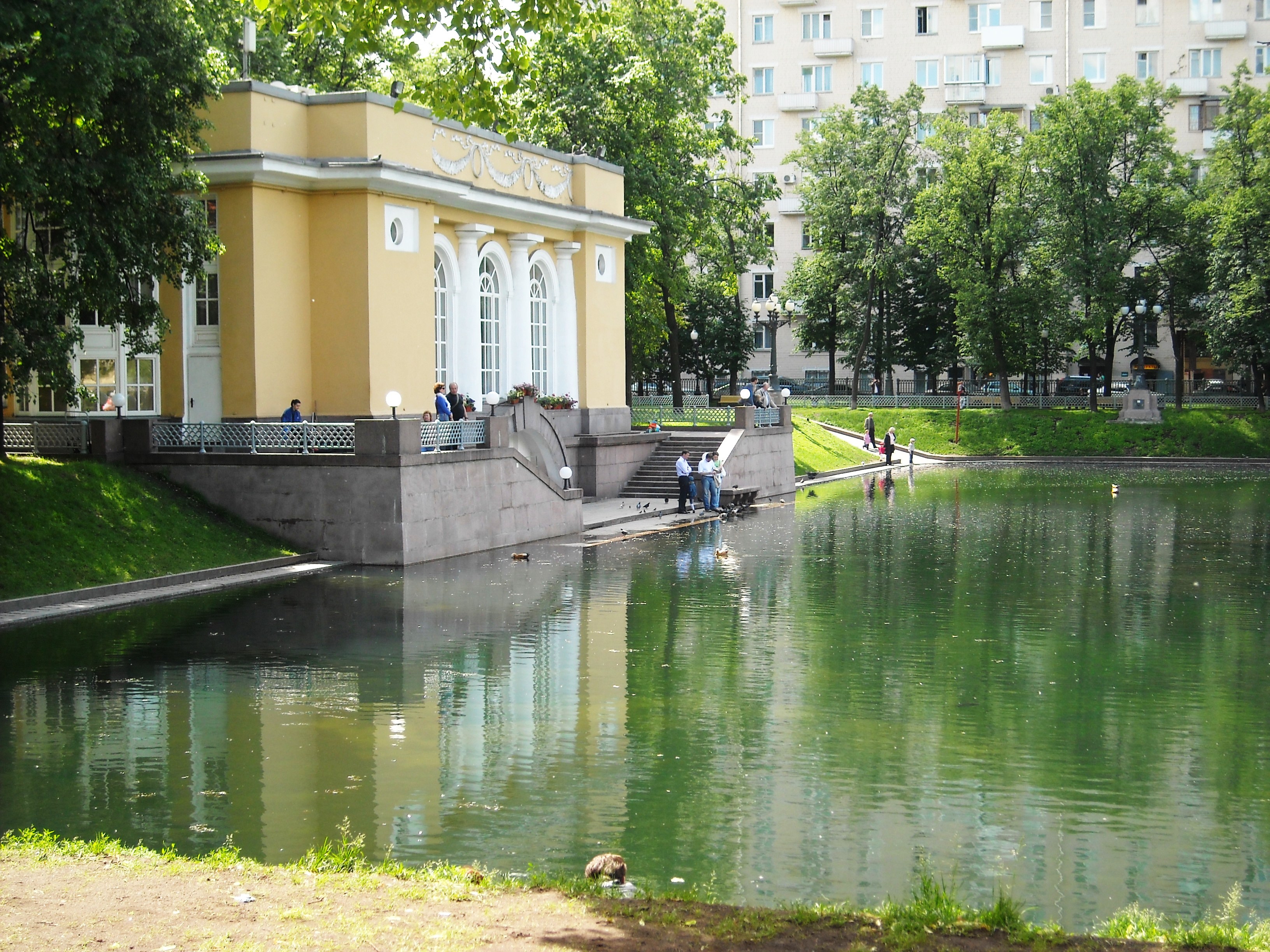|
Tverskoy District
Tverskoy District ( rus, Тверско́й райо́н, p=tvʲɪrˈskoj, a=Ru-Тверской.ogg) is a district of Central Administrative Okrug of the federal city of Moscow, Russia. Population: The district extends from Kitai-gorod northwest to Belorussky and Savyolovsky Rail Terminals . Its southern boundary runs one or two city blocks south from Tverskaya Street; eastern boundary follows the track of the Neglinnaya River now flowing in a tunnel under Samotechnaya Street, Tsvetnoy Boulevard, and Neglinnaya Street. Tverskoy District houses State Duma, Federation Council of Russia, Federation Council, the Mayor of Moscow, Moscow City Council, and Moscow Police Headquarters. It contains Theatre Square (Moscow), Theatre Square, the business district of Tverskaya Street with Pushkin Square, Petrovka Street, Dmitrovka Street, and the western part of Kuznetsky Most. It has the highest concentration of theatres, including Bolshoi Theatre and the historical Pillar Hall of the Ho ... [...More Info...] [...Related Items...] OR: [Wikipedia] [Google] [Baidu] |
Kitai-gorod
Kitay-gorod ( rus, Китай-город, p=kʲɪˈtaj ˈɡorət), also referred to as the Great Possad () in the 16th and 17th centuries, is a cultural and historical area within the central part of Moscow in Russia, defined by the remnants of now almost entirely razed fortifications, narrow streets and very densely built cityscape. It is separated from the Kremlin by Red Square. Kitay-gorod does not constitute a district (''raion''), as there are no resident voters, thus, municipal elections are not possible. Rather, the territory has been part of Tverskoy District, and the Central Administrative Okrug authorities have managed the area directly since 2003. Etymology Beside Kitay-gorod in Moscovia (region), Moscovia in ancient Russia, Kitay was also a name for a sea. A sea called Kitay exists in Odessa in Ukraine. Older sources said that people with darker skin than other ethnic groups of Russia sold goods and traded with other peoples in the area of the Kitay sea. ''Kita ... [...More Info...] [...Related Items...] OR: [Wikipedia] [Google] [Baidu] |
Pushkin Square
Pushkinskaya Square or Pushkin Square () is a pedestrian open space in the Tverskoy District in central Moscow. Historically, it was known as ''Strastnaya Square'' before being renamed for Alexander Pushkin in 1937. It is located at the junction of the Boulevard Ring (Tverskoy Boulevard to the southwest and Strastnoy Boulevard to the northeast) and Tverskaya Street, northwest of the Kremlin. It is not only one of the busiest city squares in Moscow, but also one of the busiest in the world. The former Strastnaya Square name originates from the Passion Monastery (russian: Страстной монастырь, Strastnoy Monastery), which was demolished in the 1930s. At the center of the square is a statue of Pushkin, funded by public subscription and unveiled by Ivan Turgenev and Fyodor Dostoyevsky in 1880. In 1950, Joseph Stalin Joseph Vissarionovich Stalin (born Ioseb Besarionis dze Jughashvili; – 5 March 1953) was a Georgian revolutionary and Soviet political ... [...More Info...] [...Related Items...] OR: [Wikipedia] [Google] [Baidu] |
Moscow Kremlin
The Kremlin ( rus, Московский Кремль, r=Moskovskiy Kreml', p=ˈmɐˈskofskʲɪj krʲemlʲ, t=Moscow Kremlin) is a fortified complex in the center of Moscow founded by the Rurik dynasty. It is the best known of the kremlins (Russian citadels), and includes five palaces, four cathedrals, and the enclosing Kremlin Wall with Kremlin towers. In addition, within this complex is the Grand Kremlin Palace that was formerly the Tsar's Moscow residence. The complex now serves as the official residence of the President of the Russian Federation and as a museum with almost 3 million visitors in 2017. The Kremlin overlooks the Moskva River to the south, Saint Basil's Cathedral and Red Square to the east, and the Alexander Garden to the west. The name "''Kremlin''" means "fortress inside a city", and is often also used metonymically to refer to the government of the Russian Federation. It previously referred to the government of the Soviet Union (1922–1991) and its high ... [...More Info...] [...Related Items...] OR: [Wikipedia] [Google] [Baidu] |
Vysokopetrovsky Monastery
Vysokopetrovsky Monastery (Russian: Высокопетровский монастырь, English: ''High Monastery of St Peter'') is a Russian Orthodox monastery in the Bely Gorod area of Moscow, commanding a hill whence Petrovka Street descends towards the Kremlin. The monastery is believed to have been founded around the 1320s by Saint Peter of Moscow, the first Russian metropolitan to have his see in Moscow.''Vysokopetrovsky Monastery, Russian Orthodox Church's Department of religious education and catehization, in Russian'' The cloister gave its name to adjacent Petrovka Street, one of the streets radiating from Red Square. In the late 17th century, the Naryshkin boyars, maternal relatives of Peter the Great, turned the monastery into their family burial place. They had it reconstructed in the Naryshkin Baroque style of architecture associated with their name. In the mid-18th century, several subsidiary structures were added, possibly based on designs by Dmitry Ukhtomsky or ... [...More Info...] [...Related Items...] OR: [Wikipedia] [Google] [Baidu] |
Dmitrov
Dmitrov ( rus, Дмитров, p=ˈdmʲitrəf) is a types of inhabited localities in Russia, town and the administrative center of Dmitrovsky District, Moscow Oblast, Dmitrovsky District in Moscow Oblast, Russia, located to the north of Moscow on the Yakhroma River and the Moscow Canal. Population: History Dmitrov is one of the oldest urban areas in Moscow oblast. The town was originally founded by Yury Dolgoruky in 1154, where his son Vsevolod the Big Nest, Vsevolod was born. Its name is explained by the fact that Vsevolod's patron saint was Demetrius of Thessaloniki, St. Demetrius. In the 13th century, the settlement marked a point where the borders of the Grand Duchy of Moscow, Tver, and Pereslavl-Zalessky converged. The settlement itself belonged to the princes of Galich, Russia, Galich-Mersky, located much to the north, until 1364, when it was incorporated into the Grand Duchy of Moscow. Both Dmitry Donskoy and his grandson Vasily II of Moscow, Vasily II gr ... [...More Info...] [...Related Items...] OR: [Wikipedia] [Google] [Baidu] |
Tver
Tver ( rus, Тверь, p=tvʲerʲ) is a city and the administrative centre of Tver Oblast, Russia. It is northwest of Moscow. Population: Tver was formerly the capital of a powerful medieval state and a model provincial town in the Russian Empire, with a population of 60,000 on 14 January 1913. It is situated at the confluence of the Volga and Tvertsa Rivers. The city was known as Kalinin ( rus, Кали́нин, Kalínin) from 1931 to 1990. The city is where three rivers meet, splitting the town into northern and southern parts by the Volga River, and divided again into quarters by the Tvertsa River, which splits the left (northern) bank into east and west halves, and the Tmaka River which does the same along the southern bank. History Medieval origins Tver's foundation year is officially accepted to be 1135,Charter of Tver, Article 1 although there is no universal agreement on this date and some estimates place it as late as the second half of the 13th century. The ... [...More Info...] [...Related Items...] OR: [Wikipedia] [Google] [Baidu] |
Presnensky District
Presnensky District (russian: Пре́сненский райо́н), commonly called Presnya (), is a district of Central Administrative Okrug of the federal city of Moscow, Russia. Population: The district is home to the Moscow Zoo, White House of Russia, Kudrinskaya Square Building, Patriarshy Ponds, Vagankovo Cemetery, and Moscow-City financial district (under construction). It is unusually large and diverse among the Central Okrug Districts, combining affluent residential, administrative and old industrial neighborhoods. History The name of Presnya (noun; adjective: Presnensky) district is inherited from the Presnya River, now flowing largely in an underground pipe and entering the Moskva River immediately west of the White House of Russia. Ponds that were set up on Presnya River and its tributaries in the seventeenth century survive as Patriarshy Pond (one of three ponds formerly on the ''Bubna'' stream in the Goat Marsh area) and the Moscow Zoo ponds (on the Presnya R ... [...More Info...] [...Related Items...] OR: [Wikipedia] [Google] [Baidu] |
Tverskoy Boulevard
Tverskoy Boulevard (russian: Тверской бульвар) is one of the main thoroughfares in central Moscow. It is a part of the Boulevard Ring and begins at the end of the Nikitsky Boulevard, at the crossing with Bolshaya Nikitskaya Street. The boulevard ends at the Pushkin Square and Tverskaya Street, one of the busiest places in Moscow. East of Tverskaya Street becomes Strastnoy Boulevard. First Tverskoy Boulevard was the first boulevard in the historical neighbourhood of Bely Gorod, "White Town" in Russian. The name comes from the fact that Bely Gorod was surrounded by white stone fortification wall which was built at the end of the 15th century and demolished at the end of the 17th century. It was replaced by several boulevards, together forming the Boulevard Ring. 1796 This oldest of Moscow's boulevards was laid out in 1796 under the direction of the architect Karin. Silver birches were the first trees to be planted here, but they did not take root, and so for almo ... [...More Info...] [...Related Items...] OR: [Wikipedia] [Google] [Baidu] |
Patriarshy Ponds
Patriarch's Ponds (russian: Патриаршие пруды, ''Patriarshiye prudy'') is park, pond and an affluent residential area in downtown Presnensky District of Moscow, Russia. For the last 200 years, there has been only ''one'' pond, although, as the name of Tryokhprudny Pereulok (, lit. ''Three-Pond Lane'') suggests, there used to be more. The area of the existing pond is ; the depth is about two meters. The Ponds area is accessible via the Moscow Metro Mayakovskaya (eastern exit) and Pushkinskaya stations. History Origin The area is named after the seventeenth century Patriarch's Goat Sloboda (Патриаршая Козья слобода) located on the Goat Marsh (Козье болото). This marsh was once connected by a brook to the Presnya River west; by 1739, when the first topographic map was compiled, the brook disappeared and the marsh separated from Presnya. People considered the swamp as an anomalous zone; apparently this caused a proverb "Фома по ... [...More Info...] [...Related Items...] OR: [Wikipedia] [Google] [Baidu] |
House Of The Unions
The House of the Unions (russian: Дом Союзов) (also called ''Palace of the Unions'') is a historic building in the Tverskoy District in central Moscow, Russia. It is situated on the corner of Bolshaya Dmitrovka and Okhotny Ryad streets. History The first building on this location was constructed in the early 1770s, and originally belonged to Moscow Governor General Vasily Dolgorukov-Krymsky. In 1784 it was purchased by the Moscow Assembly of the Nobility (Благородное собрание) to serve as a Ball venue for the Russian nobility. Soviet era After the October Revolution the building was assigned to the Moscow Council of Trade Unions, hence its current name. During the Soviet era it mostly served as a place for important State events, i.e. housing the Communist Party Congresses and conferences, and governmental award ceremonies, and also as a concert platform for classical and popular music performances including those by Emil Gilels, Gennady Rozhdestv ... [...More Info...] [...Related Items...] OR: [Wikipedia] [Google] [Baidu] |
.png)




